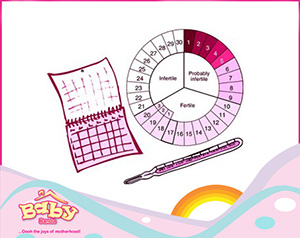Pinpointing your actual day of ovulation, or more important, knowing when you enter your peak (the 6-day fertile window), can increase your chances of getting pregnant. Studies show that timing sex to occur exactly 2 days before your ovulation day results in the greatest chance of pregnancy. So by knowing the onset of ovulation, you can increase your odds of success. Furthermore, it is important for women with cycles greater than 32 days or irregular cycles to track their ovulation more accurately. Ovulation can occur much later than day 20 for long or irregular cycles.
Fertility Awareness
Fertility Awareness (sometimes called natural family planning) involves monitoring temperatures with a basal thermometer and checking the cervical mucus to pinpoint your actual day of ovulation. Before ovulation, the cervical mucus becomes wet and slippery and will remain this way until the ovulation process has completed. Some people describe the texture as similar to “egg whites.” It becomes stretchy and more elastic-like between your fingers if you press them together and pull them apart.
In addition to monitoring cervical mucus, a basal thermometer is used to track your temperature. This kind of thermometer is extremely sensitive and will reflect a spike in your temperature that happens when ovulation occurs. There are fertility charts which you can use to record the temperatures and make it easier to notice the shifts in temperature. Fertility Awareness is a great way to become in touch with your body. Some women get to know their cycles so well that they can know when ovulation is pending or happening by the way their bodies change. However, fertility awareness does take practice and you can talk to you health care provider for further clarification.














